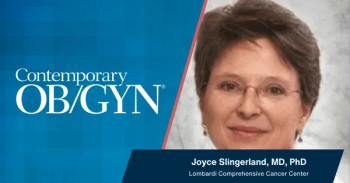
Does a healthy lifestyle during midlife affect subclinical atherosclerosis likelihood?
Data from the SWAN study underscore how critical midlife is to CVD health.
Women who embrace a healthy lifestyle during the menopausal transition are less likely to develop subclinical atherosclerosis, according to self-reported data on smoking, diet and physical activity from 1,143 women in the
“Subclinical atherosclerosis is closely related to cardiovascular disease incidence and mortality,” said corresponding author Ana Baylin, MD, DrPH, an associate professor of epidemiology, nutritional sciences and global health at the University of Michigan School of Public Health in Ann Arbor. “The midlife in women is a critical window of opportunity for cardiovascular disease prevention, and lifestyle education programs targeting overall lifestyle might be able to slow the menopause-related progression of atherosclerosis. Therefore, the effect of modifiable health behaviors on subclinical atherosclerosis in midlife women warrants further investigation.”
The study in the Journal of the American Heart Association was headed by Dongqing Wang, MPH, a PhD candidate in epidemiology at the University of Michigan School of Public Health. Using data from SWAN participants, the authors constructed a 10-year average Healthy Lifestyle Score (HLS) during midlife. They also measured markers of subclinical atherosclerosis 14 years after baseline, including common carotid artery intima-media thickness (CCA-IMT), adventitial diameter (CCA-AD), and carotid plaque. Linear models were used to estimate associations of average HLS with the CCA-IMT and CCA-AD; cumulative logit models were used to estimate associations of average HLS with carotid plaque.
An average HLS was associated with smaller CCA-IMT and CCA-AD in fully adjusted models (P= 0.0031 and < 0.001, respectively). Compared with women in the lowest HLS level, those in the highest level had a 0.024-mm smaller CCA-IMT and 0.16-mm smaller CCA-AD. Of the three components of the HLS, smoking was most strongly associated with subclinical atherosclerosis.
“A healthy lifestyle is important, even among apparently healthy women without clinically diagnosed cardiovascular disease,” Dr. Baylin told Contemporary OB/GYN. “Smoking appears to be more strongly associated with subclinical atherosclerosis than unhealthy diets and lack of physical activity, although the latter two unhealthy behaviors are also associated with subclinical atherosclerosis.”
The investigators were surprised by the finding that the vast majority of women at this life stage did not have the healthiest possible lifestyle available to them, “which again highlights the need for active lifestyle intervention in this group,” Dr. Baylin said.
The authors were also slightly taken aback by the relatively weak connections of unhealthy diet and physical activity with smoking. “Cigarette smoking is a major behavioral risk factor associated with atherosclerosis,” Dr. Baylin said. “In fact, multiple studies have shown that prolonged smoking confers a higher cardiovascular disease risk in women than it does in men.”
However, it is also feasible that because smoking is measured more accurately than diet and exercise, the relationships to diet and exercise are somewhat attenuated, according to Dr. Baylin. “When exposures are measured with a lot of error, which is the case for diet and exercise, the associations are always attenuated,” she said. “That still does not account for the fact that smoking is probably a stronger risk factor than diet and exercise, but can explain why the connections between diet and exercise do not look larger.”
Dr. Baylin noted that the importance of a healthy lifestyle cannot be overstated, especially for midlife women undergoing menopausal transition. “We believe that practicing clinicians should emphasize to their midlife female patients the importance of improving overall lifestyle, including abstinence from smoking, eating a healthy diet and engaging in regular physical activity, even if their patients are apparently healthy without clinically diagnosed cardiovascular disease,” she said.
The authors said that more prospective studies are needed of midlife women followed into their old age, as a way to further investigate how specific health behaviors during the menopausal transition could impact future cardiometabolic outcomes.
For example, Dongqing Wang has been using data from SWAN to examine the potential effects of dietary patterns and beverage intake during midlife on atherosclerosis later in life. Other healthy lifestyle factors, such as good sleep hygiene or stress management, could also be explored.
Disclosures:
Dr. Baylin reports no relevant financial disclosures.
Dongquin Wang reports no relevant financial disclosures.
Newsletter
Get the latest clinical updates, case studies, and expert commentary in obstetric and gynecologic care. Sign up now to stay informed.








